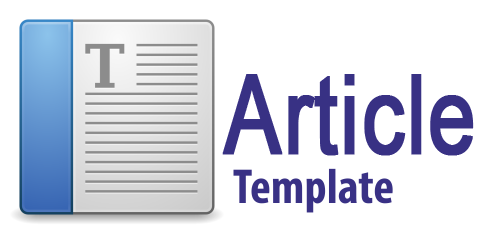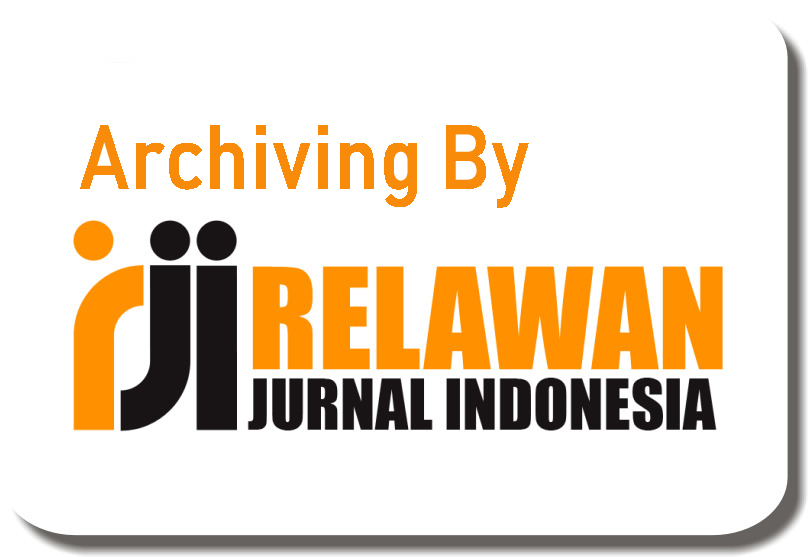Turn-Taking Strategies in the 2024 U.S. Presidential Debate between Donald Trump and Kamala Harris
Abstract
Turn-taking is fundamental in political debates, as control of the turn reflects a speaker’s communicative authority. Limited research has compared how different candidates utilize turn-taking strategies to assert control or dominance in presidential debates. This study aims to identify and analyse the turn-taking strategies employed by Donald Trump and Kamala Harris in the 2024 U.S presidential debate using Stenstrom (2014) framework. A total of 130 data points were collected from the ABC News YouTube Channel and analysed using qualitative descriptive methods. Following the steps proposed by Merriam & Tisdell (2015). The findings show that Trump predominantly used aggressive interruptive and taking the turn strategies, while Harris tended to apply more structured and holding the turn strategies. The study concludes that turn-taking strategies not only shape the structure and flow of the debate but also reflect each candidate’s dominance in the interaction.
Keywords
Full Text:
PDFReferences
ABC Action News. (2024). 2024 Presidential Debate From ABC News. Https://Www.Youtube.Com/Live/Gdsdngmdlmy?Si=Pjk6WwV2b3awMEPF
Al Dilaimy, H., Al-Rawe, M., & Suleiman, S. (2022). Donald Trump’s Aggressive And Offensive Language Before And After His Inauguration Speeches: A Critical Discourse Analysis. International Journal Of Linguistics And Translation Studies, 3(1), 1–9.
Alafifi, M. (2021). Presidential Manifestation Of Verbal Dominance: A Discourse Analysis Of Conversational Dominance Strategies Employed By Joe Biden And Donald Trump.
Annisa, R., Sembiring, M. C. A., & Perangin-Angin, A. B. (2022). A Psycholinguistic Analysis On Speech Errors Made By Kamala Harris. RADIANT: Journal Of Applied, Social, And Education Studies, 3(2), 88–104.
Aryanti, M., Yuliawati, S., Ekawati, D., & Darmayanti, N. (2024). The Use Of Turn Taking In The 2020 US Presidential Debate: A Conversation Analysis Study. Diglosia: Jurnal Kajian Bahasa, Sastra, Dan Pengajarannya, 7, 511–520. Https://Doi.Org/10.30872/Diglosia.V7i4.981
Barkho, L. (2022). Trump’s News Practices And Discursive Patterns In His New Moment As “Former President.” In The Future Of The Presidency, Journalism, And Democracy (Pp. 221–237). Routledge.
Beňuš, Š. (2009). Variability And Stability In Collaborative Dialogues: Turn-Taking And Filled Pauses. Proc. Interspeech 2009, 796–799.
Bull, Peter, & Wells, Pam. (2011). Adversarial Discourse In Prime Minister’s Questions. Journal Of Language And Social Psychology, 31(1), 30–48. Https://Doi.Org/10.1177/0261927X11425034
Clayman, S. E. (2016). The Nexus Of Politicians, Issue Positions, And The Sociopolitical Landscape. Accountability In Social Interaction, 141–174.
Creswell, J. W., & Poth, C. N. (2016). Qualitative Inquiry And Research Design: Choosing Among Five Approaches. Sage Publications.
Darchuk, M. (2020). Communicative Strategies In Political Speech Of Donald Trump. Https://Api.Semanticscholar.Org/Corpusid:226712091
Fadhli, R., & Rosita, N. (2023). Linguistic Devices Used To Persuade And Manipulate Audiences Of Political Discourse In The 2020 US Presidential Election. English Language And Literature, 12(4), 753–765.
Fairclough, N. (1992). Discourse And Social Change. (No Title).
Hasson, S. M., & Ahmed, M. S. (2022). Conversation Analysis Of Turn Taking In The Political Interview Between Luara Kuenssberg And Boris Johnson. Al-Adab Journal, 140, 79–90.
Henderson, A., Goldman-Eisler, F., & Skarbek, A. (1965). The Common Value Of Pausing Time In Spontaneous Speech. Quarterly Journal Of Experimental Psychology, 17(4), 343–345.
Jesudas, R., & Mohammed, Z. (2025). Discourse Strategies In Action: Unpacking Wodak’s Framework In The 2024 Presidential Debate Between Trump And Harris. Scientia. Technology, Science And Society, 2(1), 22–36.
Jiang, B., Ekstedt, E., & Skantze, G. (2023). What Makes A Good Pause? Investigating The Turn-Holding Effects Of Fillers. Arxiv Preprint Arxiv:2305.02101.
Jiménez-Preciado, A. L., Álvarez-García, J., Cruz-Aké, S., & Venegas-Martínez, F. (2024). The Power Of Words From The 2024 United States Presidential Debates: A Natural Language Processing Approach. Information, 16(1), 2.
Kaldybekova, N., & Duisekova, K. (2023). Examining The Employment Of Indirect Communication By Donald Trump: Analyzing Verbal And Non-Verbal Strategies. Journal Of Pragmatics And Discourse Analysis, 2(2), 16–21.
Karami, S. (2015). Pause: A Device For Troubling Routines. Drawing On, 1, 75–84.
Lundholm Fors, K. (2015). Production And Perception Of Pauses In Speech.
Maru, M. G., Gustine, G. G., Setiawan, S., Tadete, J. J., & Kumajas, T. (2023). Interpreting Repetition Expressions In The Writing Of Trump’s Addresses During The Covid-19 Pandemic. Indonesian Journal Of Applied Linguistics, 12(3), 694–705.
Mcdonald, L. (2021). Your Word Against Mine: The Power Of Uptake. Synthese, 199(1), 3505–3526.
Medeiros, R. (2022). A Formação Discursiva E A Construção Do Ethos No Discurso De Vitória De Kamala Harris. Redis: Revista De Estudos Do Discurso, 11, 185–216.
Merriam, S. B., & Tisdell, E. J. (2015). Qualitative Research: A Guide To Design And Implementation. John Wiley & Sons.
Mezmir, E. A. (2020). Qualitative Data Analysis: An Overview Of Data Reduction, Data Display, And Interpretation. Research On Humanities And Social Sciences, 10(21), 15–27.
Muchsani, M. (2023). Examining The Use Of Fillers In A Presidential Debate: A Case Of Hilary Clinton And Donald Trump. Jambura Journal Of English Teaching And Literature, 4(1), 42–52.
Natalia, D. D., Subekti, F., & Mirahayuni, N. K. (2020). Turn Taking Strategies in Political Debates. Anaphora : Journal Of Language, Literary, And Cultural Studies, 2(2). Https://Doi.Org/10.30996/Anaphora.V2i2.3365
Novikova, O., & Suima, I. (2023). The Strategies of Argumentation in Political Speeches. Journal “Ukrainian Sense,” 2, 76–89.
Poggi, I., D’Errico, F., & Vincze, L. (2022). Subtle Ways To Discredit In Debates: Comments By Words, Face, And Body. In Social Influence, Power, And Multimodal Communication (Pp. 144–162). Routledge.
Rohmah, Z., & Suwandi, A. F. (2021). Donald Trump’s And Hillary Clinton’s Interruptions In Presidential Debates. JEELS (Journal Of English Education And Linguistics Studies), 8(1), 97–118.
Sa’adah, Z. N. B. (2022). Turn Taking Strategy In The 2020’s American Presidential Debate. Journal Of Literature, Linguistics, & Cultural Studies, 1(1), 140–159.
Sacks, H. (1978). A Simplest Systematics For The Organization Of Turn Taking For Conversation. Academic Press.
Shuqi, C. (2022). The Pragmatic Function Of The Discourse Maker “Well” In TED Talks From The Perspective Of Relevance Theory. Journal Of Critical Studies In Language And Literature, 3(4), 11–15.
Silaen, E., & Afriana, A. (2024). Lexical Cohesion Analysis Of Donald Trump’s Script Speech:-. Jurnal Basis, 11(1), 35–46.
Stenstrom, A.-B. (2014). Introduction To Spoken Interaction, An. Routledge.
Tymbay, A. (2022). Effectiveness Of Interruptions As A Communicative Strategy In The 2020 Presidential Debates In The USA. Brno Studies In English, 48(2), 101–118.
Yao, Y., Liu, B., & Li, Y. (2025). Turn-Taking In Political Interviews And Its Impact On Building Government Credibility. World Journal Of English Language, 15(2), 1–11.
DOI: https://doi.org/10.31004/jele.v10i3.836
Refbacks
- There are currently no refbacks.
Copyright (c) 2025 Farhan Ahzami, Andang Saehu, Erfan Muhammad Fauzi

This work is licensed under a Creative Commons Attribution-ShareAlike 4.0 International License.



